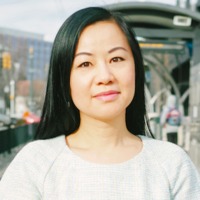
Steve Przymus
https://coe.tcu.edu/faculty-staff/steve-przymus/
less
Related Authors
Dorothee I Richter
Zurich University of the Arts
Nergis Canefe
York University
Lisa Zunshine
University of Kentucky
Andrea Gadberry
New York University
Zahra ALI
Rutgers at Newark
Darryl Wilkinson
Dartmouth College
Jorge Núñez
University of Amsterdam
Min Jiang
University of North Carolina at Charlotte
Christopher Patrick Miller
University of Utah










Uploads
Papers by Steve Przymus
schooling and thus forms opinions of what schools are, falls
victim to folk theory about curriculum, and lives their lives by the
myths about American education. Truth and reality have become
debatable concepts in public language. The semiological concept
of myth plays an influential role in these debates. However, just
as myths can be used to confuse and convince, if remythified
they also can be used to clarify and conjure up a new language
of reality. In this article, I critique the myth of Critical Race Theory
(CRT) in US schools. I then extend the work of Barthes ([1957]
1972. Mythologies. Translated by Annette Lavers. New York: Hill
and Wang) in applying a third semiological chain that acts to
remythify this myth with a new, more positive meaning and
reality, with hopes that this process could be extended to other
American education mythologies.
communities. The use of multimodal literacies is also important for increasing inclusivity in literacy development among neurodiverse students, students with learning differences, and active bilingual learners/users of English (ABLE students). We describe here a multimodal literacies model, Linguistic Landscape in Second Language Teaching and Learning (LLinL2TL), that teachers can use to immediately engage their students in using signs in their own communities to create and share stories. We provide examples of how the LLinL2TL model bridges the environmental print of students’ immediate community neighborhoods with literacy instruction at school and how and why this is meaningful for ABLE students and students who are neurodivergent or have learning differences. This has potential for expanding upon familiar literacy instruction for students with disabilities and ABLE students, which can by default often be more multimodal.
schooling and thus forms opinions of what schools are, falls
victim to folk theory about curriculum, and lives their lives by the
myths about American education. Truth and reality have become
debatable concepts in public language. The semiological concept
of myth plays an influential role in these debates. However, just
as myths can be used to confuse and convince, if remythified
they also can be used to clarify and conjure up a new language
of reality. In this article, I critique the myth of Critical Race Theory
(CRT) in US schools. I then extend the work of Barthes ([1957]
1972. Mythologies. Translated by Annette Lavers. New York: Hill
and Wang) in applying a third semiological chain that acts to
remythify this myth with a new, more positive meaning and
reality, with hopes that this process could be extended to other
American education mythologies.
communities. The use of multimodal literacies is also important for increasing inclusivity in literacy development among neurodiverse students, students with learning differences, and active bilingual learners/users of English (ABLE students). We describe here a multimodal literacies model, Linguistic Landscape in Second Language Teaching and Learning (LLinL2TL), that teachers can use to immediately engage their students in using signs in their own communities to create and share stories. We provide examples of how the LLinL2TL model bridges the environmental print of students’ immediate community neighborhoods with literacy instruction at school and how and why this is meaningful for ABLE students and students who are neurodivergent or have learning differences. This has potential for expanding upon familiar literacy instruction for students with disabilities and ABLE students, which can by default often be more multimodal.
Within, the myths about guns in schools, banned books, Native American school mascots, immigrant and transnational youth, who teachers are, Critical Race Theory, standard English, bilingualism and disability, chosen names and preferred pronouns, and vouchers for private school education are all critiqued, exposed for their mythical language, but also remythified, re-contextualizing the language and the discourse towards the means of supporting the most vulnerable of youth in U.S. schools. The first and foremost function of language is thought. Learning how to play within the power game of myth production and remythification is important for reorienting ideologies around American education mythologies.
https://www.cambridgescholars.com/product/978-1-5275-5622-5
The book features both theoretical and practical information about the introduction and implementation of Linguistic Landscape-centered activities in English language classrooms. Although some of the resources created by EFL teacher candidates and LL-based classroom practices shared by EFL teachers are specifically developed for English language teaching and learning contexts, the materials and ideas put forward in this book can be adapted into different L2 teaching and learning settings.
We believe that this e-book has the potential to contribute teachers, teacher educators, researchers, and other professionals to craft and implement their own Linguistic Landscape-aware practices and research in not just English language classrooms but the whole second language teaching and learning contexts at multiple levels. We look forward to seeing, reading, and engaging in further research on linguistic landscapes with an added emphasis on pedagogical practices as well as LL-inclusive L2 educational materials and resources for a wider audience. DOI to be assigned soon.
A higher quality version of this book is available at: https://repository.tcu.edu/handle/116099117/45344